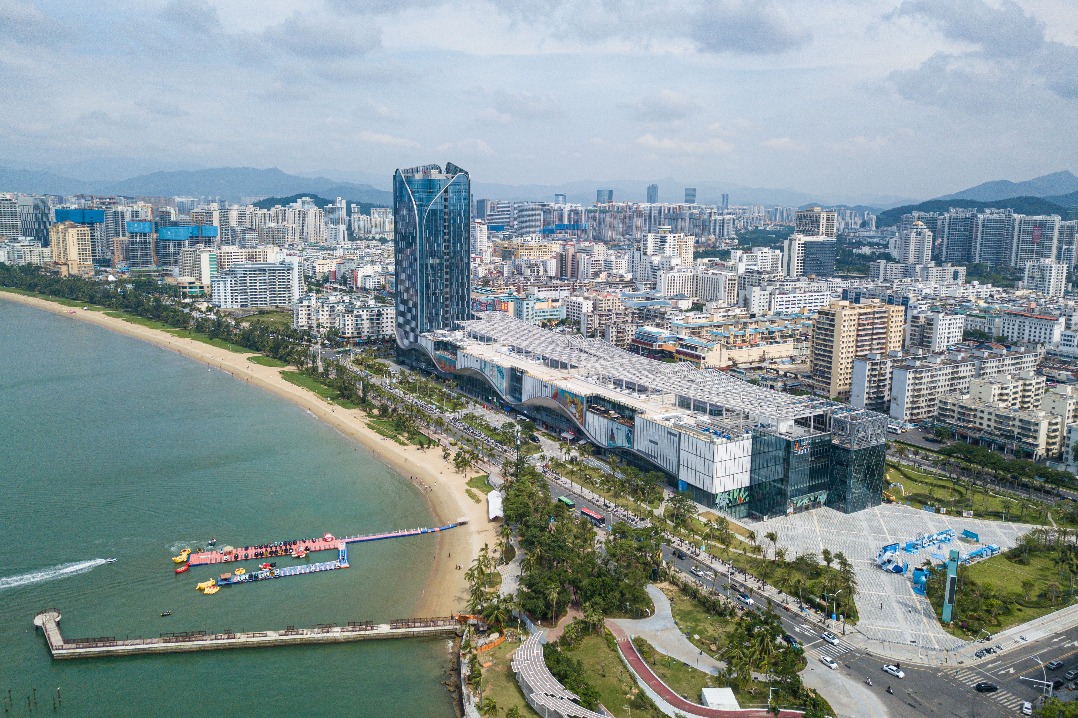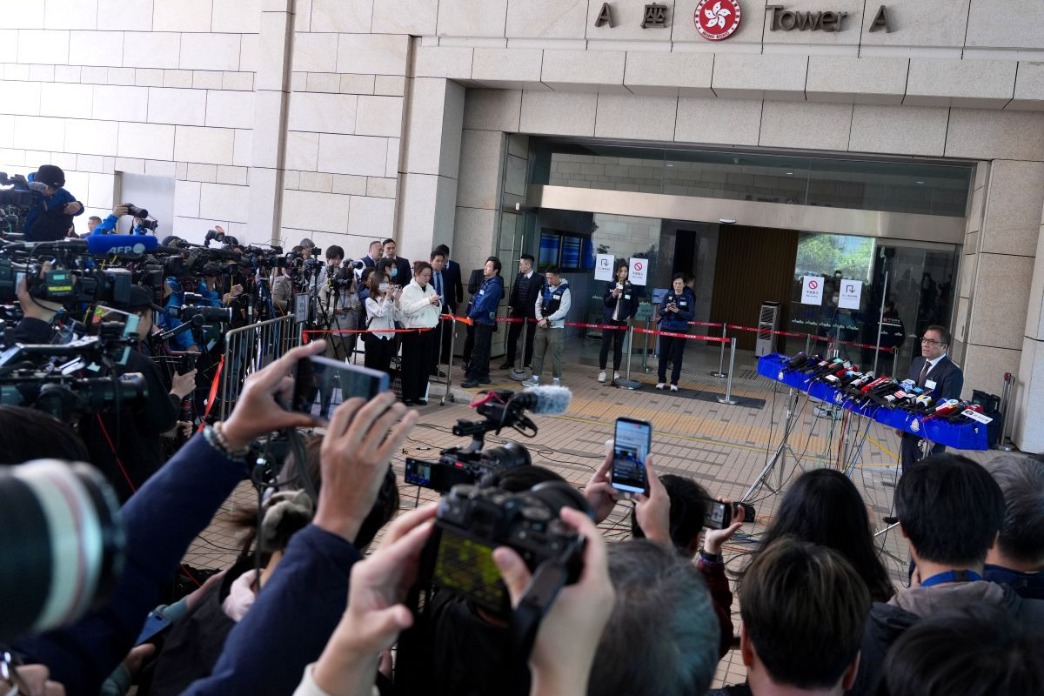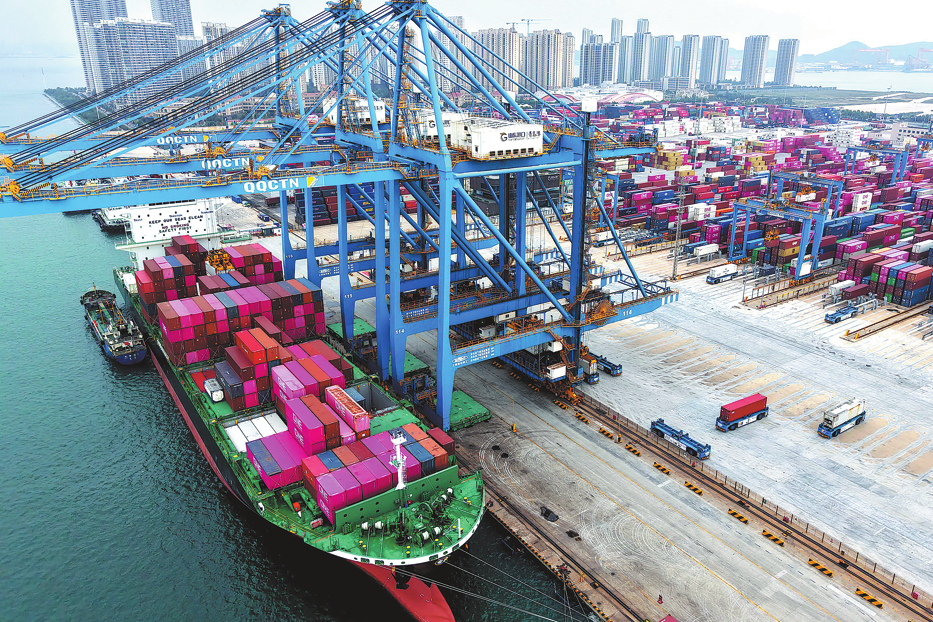Young people the future drivers of Belt and Road


In most of the countries along the Silk Road Economic Belt and the 21st-Century Maritime Silk Road which together form the Belt and Road Initiative, including China, young people aged between 10 and 24 years make up about one-fifth of the population and are a critical group within their societies.
It means that for an initiative that seeks to accelerate shared growth and sustainable development around the world through enhanced policy coordination, connectivity, unimpeded trade, financial integration and people-to-people bonds, young people must be both active participants and significant beneficiaries.
Further, if the Belt and Road Initiative is to meet its aspirations as an impactful long-term global development and cooperation strategy, it needs the young people of today to own, refresh and propel it well into the future. As UN Secretary-General Antonio Guterres has pointed out: "Young people decide whether we achieve the 2030 Sustainable Development Goals." Fortunately, in line with Chinese President Xi Jinping's view that the youth are "the hope of a country and the future of a nation", the initiative incorporates youth exchanges and education as one of several priority actions for achieving its ambitious objectives.
Noteworthy facts of Belt and Road
So far, 126 countries have signed cooperation agreements with China on the Belt and Road Initiative. Together, their share of the world's total land area and population is more than 40 percent and 60 percent, respectively. They also account for over 30 percent of the world's GDP, 40 percent of world trade, and contribute more than 50 percent of the world's population living in extreme poverty.
High levels of poverty may largely explain the contradictory situation across many Belt and Road countries in which moderately high and rising net secondary school enrollment levels among young people co-exist with relatively high levels of youth unemployment and adolescent childbearing. Indeed, recent data from the UN and the World Bank indicate that overall, the share of the population aged 15-24 that is neither in employment nor in education or training is more than one in 10 in many Belt and Road countries, including countries as vastly different as Russia, Egypt, Indonesia, the Maldives, and Armenia.
Moreover, several countries (excluding China) have youth unemployment rates of 15 percent or higher. And compared to high-income countries, at least 35 of these countries spread across South Asia, the Middle East, North Africa and Eastern Europe have relatively high levels of teenage childbearing (that is, 20 or more births per 1,000 girls aged 15-19 every year).
Core human needs interconnected
Considering these facts, it is worth remembering that all young people, no matter their geographical or social location, are engaged as part of the process of growing up in seeking ways to meet their basic physical and social needs. They also seek to acquire knowledge, skills, relationships, and values that they deem necessary for participating successfully in adolescence and adult life. Their core needs-safety and well-being, quality education and training, decent employment, wholesome relationships and social networks, and meaningful participation in community life-are necessarily interconnected.
Failing to meet one core need almost inevitably undermines the fulfillment of the others. For example, thousands of 10-to 14-year-old girls in several Belt and Road countries are knocked off the track of healthy and productive transition into young adulthood by domestic violence and forced marriage. These human rights violations often abruptly terminate the girls' schooling, harm their health, isolate them from their peers, and undermine their lifelong economic productivity, leading to a vulnerable adulthood and old age.
Empowered youth as agents of change
Yet it is well established that when empowered, young people become effective drivers of economic and social change. The Belt and Road Initiative's impact on the sustainable development of participating countries would thus be significantly enhanced if its investments are structured to include or contribute to the expansion of the health, social, and economic assets of young people. It is smart economics to do so, because their central placement in household, community and national life cycles means that it is the young people of today that will determine the development prospects of their countries, and the contributions of the initiative therein.
In reality, some of the investments required to maximize the potentials of young people as drivers of change in Belt and Road countries do not entail huge financial outlays. For instance, as Belt and Road countries sustain their efforts to expand access to secondary education for their young people, the returns on such efforts could be significantly boosted by providing additional resources to close the gaps that prevail between boys and girls in the completion of secondary education in so many of these countries.
Efforts at increasing the employment and employability of young people must also have a strong gender equity focus, as a recent International Labour Organization report shows that globally, women and girls account for nearly 70 percent of the young people that are neither in employment nor in education or training. In addition, more resources and efforts need to be committed to increasing access to comprehensive sex education, and sexual and reproductive health services for young people, especially adolescent girls, to provide them a solid foundation for healthy and happy adulthood.
Cost-effective means of harnessing skills
In combination, these interventions represent one of the most cost-effective means of fully harnessing the skills, energies and creativity of young people in Belt and Road countries for sustained national development. They help to increase their life-long opportunities, starting with higher levels of schooling, prevention of unintended pregnancies, later and healthier starts to childbearing, and more opportunities for decent employment.
On a positive note, there is strong evidence to indicate that recent and ongoing expansions in transport, communications and energy infrastructure, and manufacturing as a result of significant Belt and Road-related investments in several countries across Asia, Europe, the Middle East, Latin America and Africa are helping to boost their rates of economic growth.
To be sustainable, however, this growth must be managed to yield decent jobs, improved health outcomes, and enhanced life opportunities for the majority of the citizens of these countries, especially their youth. The key point here is that investments in education, health, safety, skills, and economic productivity of young people directly help to build the human capital required for multiplying and sustaining the effects of the investments in roads, railways, ports, power plants, e-commerce platforms, and industrial complexes.
In addition, modern history tells us that economic growth that does not generate improved well-being in the present as well as optimism about the future among the teeming youth of today may trigger social discontent and political instability.
Implications for Belt and Road
Going forward, far greater attention needs to be given to how young people more actively participate in and benefit from the initiative, for a resilient, healthy and productively engaged young generation is the foundation for any country's stability and prosperity. If the Belt and Road Initiative is to fulfill its potential, its associated investments must generate impacts that afford the majority of young people in participating countries the information and services to guarantee their healthy development, and the opportunities and capacities to lead and participate in the national development process, ultimately benefiting their own future.
In particular, in the spirit of the Agenda 2030 for Sustainable Development of "leaving no one behind", it must especially impact positively on the life chances of disadvantaged young people such as those living with disabilities, and those displaced or on the move due to violent conflicts, natural disasters, or economic destitution.
The author is resident representative (China) of the United Nations Population Fund. The views don't necessarily reflect those of China Daily.


































